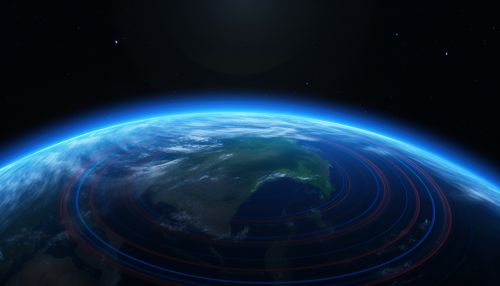The Dynamics of Earths Radiation Belts and Spacecraft Protection
Introduction
The Earth's radiation belts, also known as the Van Allen belts, are regions of energetic charged particles that are captured by and held around the planet by its magnetic field. Understanding the dynamics of these belts is crucial for the protection of spacecraft, as the high-energy particles can cause damage to electronic systems and pose a risk to human health during space travel. This article delves into the complexities of these radiation belts and the strategies used to protect spacecraft from their effects.


The Earth's Radiation Belts
The Earth's radiation belts were discovered in 1958 by the American scientist James Van Allen, and are thus often referred to as the Van Allen belts. There are two main belts - the inner belt and the outer belt - with a supposed slot region in between. The inner belt is primarily composed of high-energy protons, while the outer belt is dominated by high-energy electrons.
These belts are not static, but dynamic, changing in response to solar activity and the Earth's own magnetic field variations. The particles within the belts are trapped by the Earth's magnetic field, spiraling along the field lines and bouncing between the northern and southern magnetic poles. This complex motion is described by the theory of charged particle motion in a magnetic field, which is a key aspect of understanding the dynamics of the Earth's radiation belts.
Spacecraft Protection
The high-energy particles within the Earth's radiation belts pose a significant threat to spacecraft. They can penetrate the walls of spacecraft and cause damage to electronic systems, potentially leading to system failures. In addition, they pose a risk to human health during space travel, as exposure to high levels of radiation can lead to a variety of health issues, including cancer.
To protect spacecraft from these effects, a variety of strategies are employed. One common approach is to design the spacecraft's orbit to avoid the most intense regions of the radiation belts. Another strategy is to use materials that are resistant to radiation damage for the construction of the spacecraft. In addition, electronic systems can be shielded to reduce the risk of damage from high-energy particles.
Dynamics of the Earth's Radiation Belts
The dynamics of the Earth's radiation belts are influenced by a variety of factors. Solar activity, such as solar flares and coronal mass ejections, can increase the intensity of the radiation belts. The Earth's own magnetic field also plays a crucial role, as changes in the field can lead to changes in the motion of the trapped particles.
One of the key aspects of the dynamics of the radiation belts is the process of magnetic reconnection, which can lead to the acceleration of particles within the belts. This process occurs when the magnetic field lines in the Earth's magnetosphere reconnect, releasing a large amount of energy and accelerating particles to high speeds.
Future Research and Developments
Understanding the dynamics of the Earth's radiation belts and developing effective strategies for spacecraft protection is an ongoing area of research. Future developments may include more advanced shielding materials, improved prediction models for radiation belt activity, and new strategies for spacecraft orbit design to avoid the most intense regions of the radiation belts.
